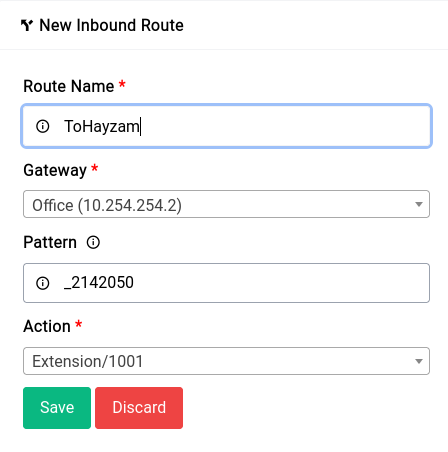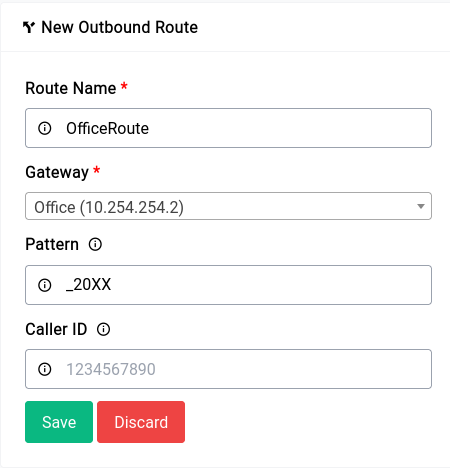This is not the latest version of this documentation, for the one that is upto date, please see the latest version (2.7.0)
Call Routing
Call routing directs incoming calls to the right person, department, or extension within an organization, while outbound routing directs outgoing calls to the appropriate external number or network. Both types of routing help businesses manage their calls efficiently and improve the caller experience.
To demonstrate we’ll be doing a few things:
- Create an inbound route to route a call from one number to an extension
- Create an outbound route that will take numbers having a specific pattern to a specific gateway
Inbound Routing
Lets say you have a PRI or SIP trunk with the following pilot and DID numbers respectively
Pilot Number: 042142000 DID Number: 042142000 - 042142099 (100 Numbers)
If you want to route the calls to the number 042142050 to the extension 1001 you’d create an inbound route like this:

You an notice in the pattern we’ve given _2142050, the default action can be pretty much anything from IVRs to Queues to extensions.
Outbound Routing
Outbound call routing involves selecting the most appropriate outbound route for a call, based on factors such as cost, quality, and availability. This is typically done using a routing table or algorithm that determines the best route for each call.
For our example, we’re going to setup a route that will route all calls that starts with the pattern _20XX to go through the Office gateway that we have created earlier.

Normally, the Caller ID of the calling extension is passed through, but if you specify a Caller ID in this field, it will override the default Caller ID. Additionally, when creating the extension, you have the option to specify an outbound CID. If you have set an outbound CID, it will be used in the case of a Telecom-provided DID.

